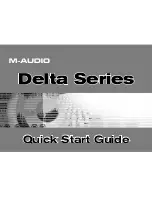
2000-A2-GB20-10
- xii -
February 2004
Chapter 8,
Firewall Configuration
on page
154
, provides information about
setting up the IAD to perform IP filtering.
Chapter 9,
DHCP Server Configuration
on page
155
, walks you through
the steps required to configure the Dynamic Host Configuration Protocol
(DHCP) server and client.
Chapter 10,
Multicast Configuration
on page
163
, describes the steps to
configure the IAD to perform Network Address Translation (NAT).
Chapter 11,
NAT Configuration
on page
169
, describes the steps required
to configure the IAD to perform Network Address Translation (NAT).
Chapter 12,
IAD Reports
on page
181
, describes each report you can run.
Chapter 13,
Command Line Interface
on page
221
, describes how to enter
and exit CLI mode, and how to use each command in the command line
interface. You may use these commands instead of using the
corresponding commands in the menu interface.
Chapter 14,
Troubleshooting and Diagnostics
on page
236
, shows you
how to troubleshoot and diagnose your IAD configuration when abnormal
symptoms occur in the voice or computer network.
Chapter 15,
Verification
on page
247
, describes the steps you take to
verify normal operation once you’ve installed, connected and configured
the IAD. It also covers maintenance and how to display the current
configuration.
Appendix A,
Menu Map
on page
250
, provides a graphic view of the IAD
menu interface, illustrating its navigation and organization.
Appendix B,
Country Codes
on page
252
, lists the specifications for each
country code supported in the IAD.
Appendix C,
JetFusion IAD Specifications
on page
254
, lists the
specifications for each IAD.
Appendix D,
Connector Pinouts
on page
265
, provides interface pinout
information for each type of port on the IADs.
Safeguards
You should read and understand the following precautions and warnings
before using the JetFusion IAD. You should post these precautions in a
clearly visible location near each IAD.
The Safety status of the SLIC ports on this product are defined as TNV
-2. Therefore, cables attached to them should not be subject to over
voltage. To ensure this they should not leave the building in which the
Unit is installed.
Close supervision is necessary when the system is used by or near
children. Do not leave unattended while in use.
Only use electrical extension cords with a current rating equal to that of
the system.
Always disconnect the system from power before cleaning and
servicing and when not in use.
Do not spray liquids directly onto the system when cleaning. Always
apply the liquid first to a static free cloth.
Do not immerse the system in any liquid or place any liquids on it.















































